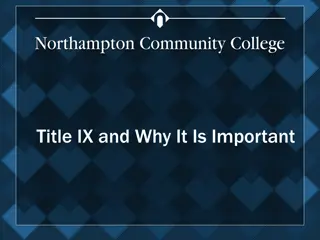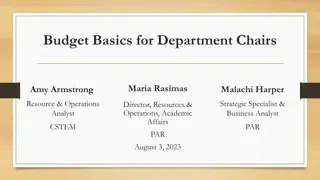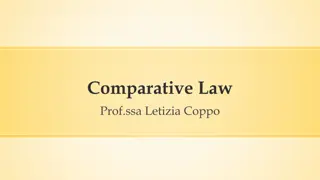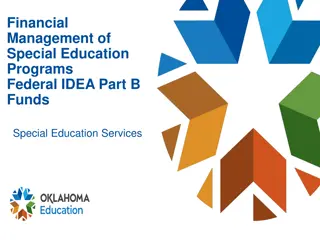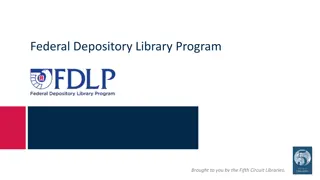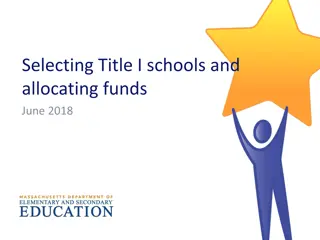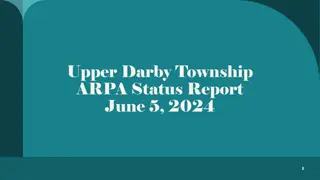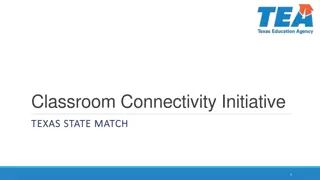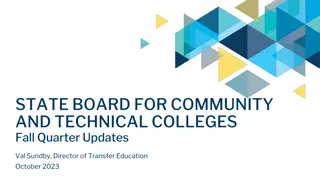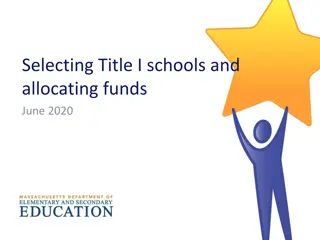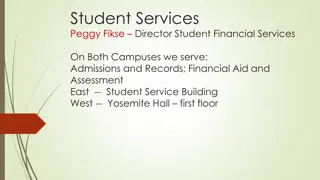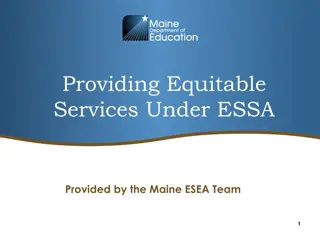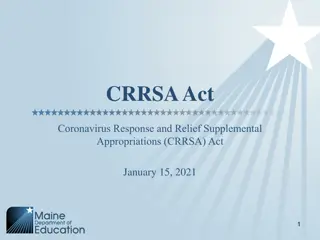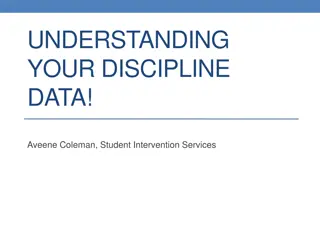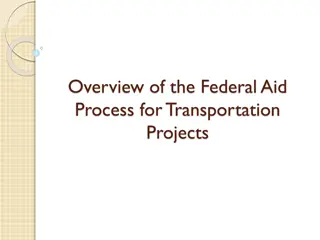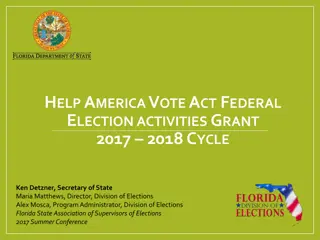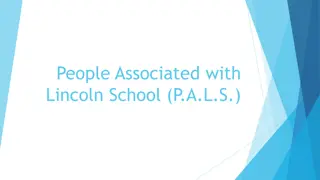Understanding Braiding Federal Funds for Educational Initiatives
Explore the concept of braiding federal funds for educational initiatives, including coordinating funds, requirements, continuous improvement, and questions to consider. Learn about the importance of aligning funds with program requirements, understanding the distinction between braiding and blending, and honoring Supplement not Supplant (SNS) requirements. Discover how to deepen knowledge, assess priorities, and ensure compliance with federal programs for effective fund allocation.
Download Presentation

Please find below an Image/Link to download the presentation.
The content on the website is provided AS IS for your information and personal use only. It may not be sold, licensed, or shared on other websites without obtaining consent from the author. Download presentation by click this link. If you encounter any issues during the download, it is possible that the publisher has removed the file from their server.
E N D
Presentation Transcript
Intended Outcomes Deepen knowledge of how braiding works Understand requirements when braiding with federal funds Explore example scenarios Oregon Department of Education 2
Braiding = Coordinating funds Funds tracked separately Use of funds must align to program requirements Supplement not Supplant (SNS) requirements must be honored What does it mean to braid funds? Different than blending Blending = Combining funds Funds are comingled Combined funds have a new identity Oregon Department of Education 3
Braiding and Continuous Improvement The district improvement plan serves as a tool to connect federal funding sources Consider the priorities identified in your Integrated Guidance plan based on the comprehensive needs assessment The decision to braid funds is program and situation specific Oregon Department of Education 4
Questions to consider: To braid or not to braid? What initiative or activity have we identified as a priority? What federal funds are eligible to braid for this initiative? What are the intent and restrictions of each federal program? How will we ensure allocability, SNS, and maintenance of effort requirements are not violated? Oregon Department of Education 5
Requirements Oregon Department of Education 6
Braiding and Allocability A federal program that funds a portion (or all) of a project, must receive a benefit relative to the contribution it makes. This standard is met if the cost: Is incurred specifically for the grant award; Is necessary to the overall operation of the grant Oregon Department of Education 7
Braiding and Supplement not Supplant (SNS) Federal grant funds may be used only to supplement the educational programs generally offered with state and local funds and to provide supplemental services that would not have been provided had the federal grant funds not been available. Supplement to add to; to enhance; to expand; to increase; to extend Supplant to take the place of; to replace by something else SNS rules vary by program, so know before you braid! Oregon Department of Education 8
Braiding and Maintenance of Effort (MOE) Districts must annually demonstrate that spending of state and local funds remains at 90% or above what was spent in the preceding year Even if braiding will not violate SNS requirements, braiding with federal funds could impact Maintenance of Effort. Oregon Department of Education Oregon Department of Education 9
Additional Requirements Inventory Complete and accurate records; accurate and timely tracking Time and Effort Internal controls that ensure accuracy, allowability, and allocability Records that accurately reflect the work performed Allowability Is the activity associated with the cost authorized under the grant program? Does it meet the cost principles described in the Uniform Grants Guidance (UGG)? Oregon Department of Education 10
Scenarios Oregon Department of Education 11
Scenario 1 - MTSS The district has a multi-tiered system of support (MTSS), in which federal program funds are used to serve the students targeted by each program. Title I-A: Costs related to the screener, the assessments, and the intervention program Title II-A: Costs related to professional learning on the intervention program for all teachers Title III: Costs related to supplemental intervention programming for English Learners and immigrant youth Title IV-A: Costs related to the technology needs for the program IDEA: Costs related to the supplemental intervention programming for children that experience disability Oregon Department of Education 12
Scenario 2 Unfinished Learning To address unfinished learning, a district plans to offer a summer school program. Title I-A: Costs related to teacher salaries and benefits (in Title I-A funded schools only) Title II-A: Costs related to professional development on the summer school program for all staff Title III: Costs related to supplemental programming to support English Learners and immigrant youth for the summer school program Title IV-A: Costs related to the well-rounded curriculum for summer school program Title V-B: Costs related to supplemental materials and supplies for the summer school program IDEA: Costs related to supplemental intervention programming for children experiencing disability for the summer school program Oregon Department of Education 13
Scenario 3 Inclusive Instruction To support the inclusion of students experiencing disability in the general education environment, a district wants to increase opportunities for co- teaching by general and special educators. Title I-A: Costs related to teacher salaries and benefits (in Title I-A funded schools only) Title II-A: Costs related to professional learning on effective models of co-teaching Title III: Costs related to supplemental programming to support English Learners and immigrant youth in the co-taught classroom IDEA: Costs related to salaries for paraprofessionals to support students experiencing disability in the general education classroom; assistive technology services and supports Oregon Department of Education 14
Putting it all together Ensure federal funding sources will supplement, not supplant. Proper documentation and tracking is vital to successfully braiding funds. If braided effectively, funds can be used to provide more comprehensive support than would otherwise be available. Oregon Department of Education 15
Oregon Federal Funds Guide ESSA Quick Reference Briefs o Braiding with Federal Funds o Determining Allowability o Inventory o Time and Effort o Supplement not Supplant Effectively Braiding Funds for Summer Resources National Resources Braiding and Blending Federal Funds: A Step-by-Step Guide Unlocking State and Federal Program Funds Oregon Department of Education 16








